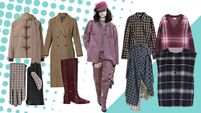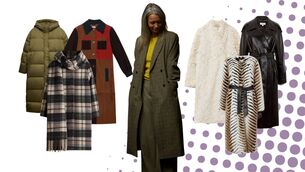Step back in time: Why the 90s are back in vogue

There’s war in the Middle East. Financial markets are faltering.
A Clinton is on the cusp of entering the White House. Madonna was touring.
Skinny models are dressed in skinny dresses, suspended from skinny straps.
Fashion imagery is raw and markedly unretouched. Calvin Klein released a provocative campaign to a global furore. Gucci is cool.
Kate Moss is on magazine covers.
Today looks a lot like the 90s. Yet stylistically, what that meant wasn’t even clear back then.
Unlike prior decades, the fashion of the 90s cannot be easily summarised.

For those who lived through it, there was a sense of transience, of not only a century but of a millennium drawing to a close.
Of both relentlessly looking forward to the promise of the brave and the new and back via an exhaustive sputtering of revivals.
To focus on the waiflike figure of Moss and other “heroin chic” girls, the ramrod-straight, no-frills minimalism of Calvin Klein or Marc Jacobs’s flannel-layered grunge is to ignore the preened and pouting models wrapped in the highly constructed clothes of Thierry Mugler (a futurist), Vivienne Westwood (a historicist) and Gianni Versace (a Versace).
And how different their work was from John Galliano and Alexander McQueen, arch romanticist and renegade rebel respectively, whose clothes spectacularly revived the two French fashion houses Dior and Givenchy, adding fresh blood and a frisson of anarchy to the staid sphere of haute couture?
And where does the high-gloss, highly sexed figure of Tom Ford fit in that litany of decade definers?
He’s a category unto himself.
They all are.

Focus on the 90s long enough, though, and a distinct vision emerges.
Beauty was redefined as something simpler, less constructed, echoed in interiors where shiny damask and flowery chintz were tastefully reswaddled in textured neutrals.
The stuffing was knocked out of the clothing of the 80s, the puffing and padding deflated, leaving pieces pulled close against the body: T-shirt dresses, slip dresses, hipster jeans, ribbed knits.
Those clothes conspired to create that most powerful and enduring hallmark of the decade: a slim silhouette.
Like 18th-century portraits snipped out of black paper, a silhouette in fashion acts as a visual shorthand for a certain moment in time.
Glance at a figure bent in an S and you know it comes from the 1900s; a hand-span waist and pencil skirt is recognised as Dior’s curvaceous 50s.

Fashion is a game of proportion.
Narrow-shouldered and narrow-hipped, the 90s were skinny.
The bombastic troika of Linda, Cindy and Christy was replaced by Kate Moss in a slip dress designed by Klein, Galliano or Prada.
Their approaches were different, but the silhouette was consistent.
The imprint of fashion’s silhouette then affected the bodies themselves.
Supermodels became super waifs.
So why this rediscovered taste for the 90s now?
This redux isn’t limited to the runway, to the slithery bias dresses by everyone from Joseph Altuzarra to Riccardo Tisci at Givenchy, to the grunge redux at young labels like Marques’Almeida and Vetements, to Donatella Versace reviving Versace.
It’s reflected in the television shows we watch, the music we now play on our iPods, the colours we gravitate to.

Neo-Nirvana grunge bands with names like Drenge and Darlia (both from England, rather than Seattle) have emerged concurrent with cozy-glow sitcoms like Grace and Frankie, nostalgic in format rather than subject matter.
One member of the duo behind that show is Marta Kauffman, who co-created Friends.
The aesthetics of any given moment are a response to a complex series of economic realities, social norms, the moral dilemmas of the day and various technological and cultural occurrences — conventional wisdom being that a tumbling stock market sends hemlines falling.
But perhaps the most important message of fashion in the 90s was the idea of authenticity.
It’s a word thrown around a lot now by influential designers like Gosha Rubchinskiy and Vetements’ Demna Gvasalia, who were only teenagers back then but whose work seeks to capture a sense of the gritty reality expressed in the late Corinne Day’s photographs of Moss and the early work of Martin Margiela or Helmut Lang, whose clothing — purposefully creased and shredded, constructed from synthetic fabrics with little embellishment — consciously rejected established paradigms of high fashion in search of something new.

Fashion is, undoubtedly, a reactionary business.
Such viewpoints are a salve against the prevalence of overblown luxury.
They are an antidote to corporate spin and shiny celebs famous for their fame.
What a welcome break a bit of the ugly, awkward, creased and crumpled is from blown-up body parts airbrushed to car paint finish and encased in Saran-wrap tight, painfully polished clothes.
Suddenly, that breed of beauty looks like it comes from a different world.
Or at least, from a different time.










